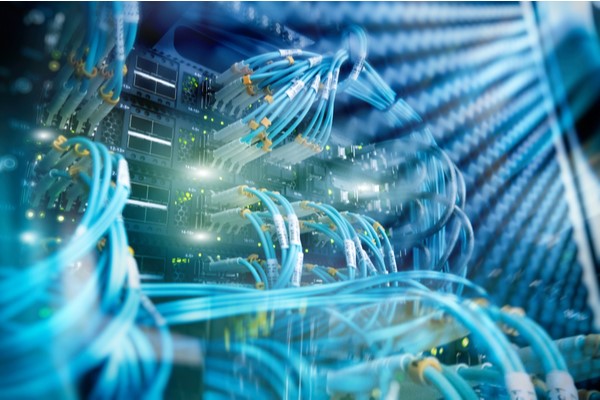
Fiber optic network

29.11.2023
Fiber optic network , Daily Current Affairs , RACE IAS : BEst IAS Coaching in Lucknow
|
For Prelims:About Fiber-Optic Network,Important points,Types of fiber optic networks For Mains paper :How does the fiber optic network work?,Parts of fiber optic network system, Benefits of Fiber Optic Network |
Why in the news?
During the unprecedented COVID-19 pandemic, the one thing that connected us virtually was high-speed internet connection through fiber optic networks.
Important points:
- Fiber-optics are thin cylindrical threads of glass whose diameter is close to the diameter of a human hair.
- Physicist Charles Kao was the first to suggest that glass fibers might be a better medium for telecommunications than copper wires, for which he received the Nobel Prize in Physics in 2009.
About Fiber-Optic Network:
- Fiber-optic network is a system in which information is sent from one place to another in the form of points of light through optical fiber.
- Light represents an electromagnetic wave carrier that systematically carries information.
- Optical fibers provide greater bandwidth because they transmit data through light, meaning they can carry signals at higher speeds and with much less distortion than copper cables of the same diameter.
- A single optical fiber can carry 90,000 television channels and three million voice calls.
- Data can fly through fiber optic networks, which can also transmit light over very long distances.
- First developed in the 1970s, fiber-optic network systems have revolutionized the telecommunications industry and played a major role in the advent of the information age.
How does the fiber optic network work?
- Fiber optic networks are made up of cables consisting of bundles of glass or plastic called optical fibers that carry data converted into light.
- After being converted into digital data signals by a computer, the light is transmitted by laser along a fiber optic network.
- Light travels along the cable without "leaking" by bouncing off mirror-like walls of glass or plastic.
- The structure of the cable also contributes to preventing light scattering.
- The light beam travels to the core located in the middle of the cable. It is wrapped with another layer of glass called "cladding".
Parts of fiber optic network system:
There are 3 parts of the fiber optic communication system.
- Transmitter: It encodes information into optical signals (a form of rapidly flashing light pulses of 0's and 1's).
- Optical fiber: It transmits the signal to its destination.
- Receiver: It is placed at the destination which reproduces the information from the encoded signal.
Types of fiber optic networks:
- Fiber to the Home (FTTH): The fiber optic connection starts from the central office of the telecom operator and travels to the user's home. This technology provides the best performance.
- Fiber to the Cabinet (FTTC): The fiber optic connection covers the segment from the central office to the street cabinet, while the final connection from the cabinet to the home uses copper cables.
- Fiber to the tower (FTTT): Fiber optic connections connect primary telecommunications networks to cellular network towers.
Benefits of Fiber Optic Network:
- Flexibility: They are lighter, thinner, and stronger than copper cables, and they are less likely to break or get damaged.
- More secure: They are also more secure, as their transmission is very difficult to stop. They are not affected by electromagnetic interference.
- Fiber optic cables can carry signals up to 40 kilometers without signal degradation, whereas the maximum distance for copper cables is just under a kilometer.
- Low Latency: Fiber optic networks have low latency. In other words, they are fast. This rapid data transfer makes it possible to implement self-drive AI systems in cars or drones, telemedicine, national security, or manage safety on construction sites and work zones.
- Better Streaming: The high data capacity of fiber optic networks means they don't get overloaded as easily as copper cable networks, so it's faster to download and stream your favorite movies.
Source:Indian Express